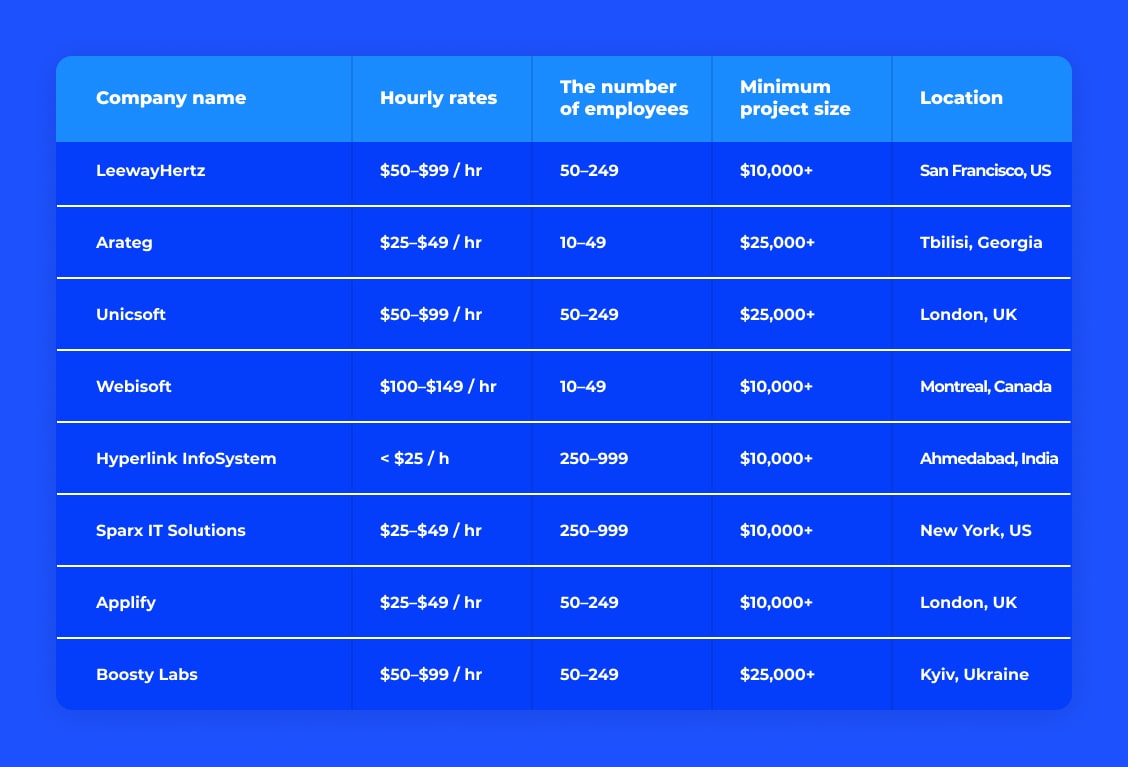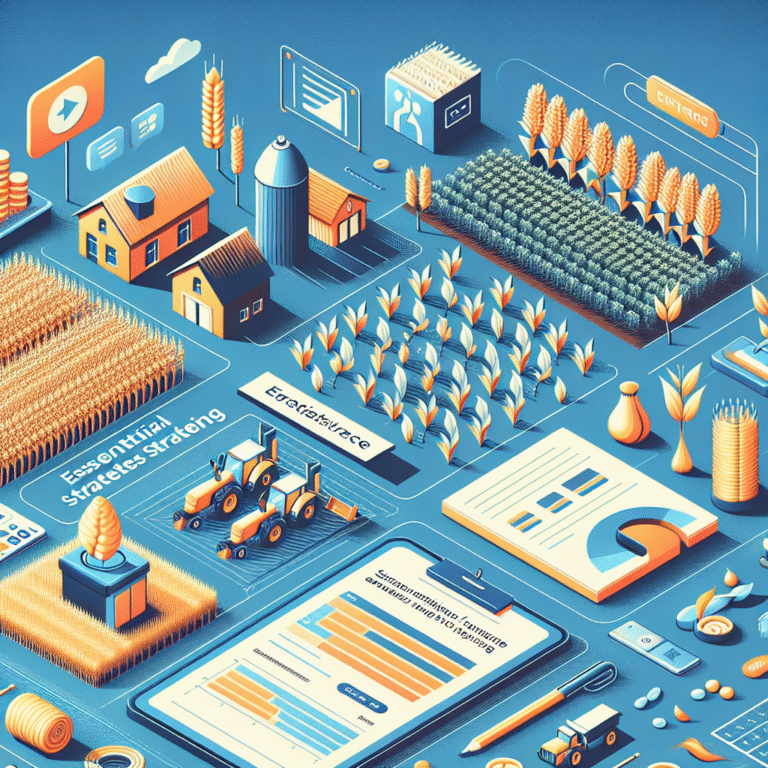NFT marketplace development will reach USD 147.24 billion between 2021 and 2026. The market shows remarkable momentum and research suggests it will hit $3,162M by 2027.
What’s driving this surge? NFTs have become the talk of the digital world. Creators can now monetize their work directly without middlemen. These unique digital assets on blockchain technology reshape how we view digital creation, ownership, and trading.
This piece will help tech entrepreneurs, businesses eyeing Web3, and anyone curious about building an NFT marketplace from scratch. You’ll learn each development step – from basic concepts to platform launch. We’ll also tackle key aspects like development costs and different ways to build your marketplace.

Let us give you a clear explanation about building a marketplace that can speed up Web3 adoption. We’ll help you direct your path through the exciting yet complex NFT development landscape.
Step 1: Understand What an NFT Marketplace Is
Building an NFT marketplace starts with a clear understanding of its nature and operation. NFT marketplaces are digital platforms where users create, buy, sell, and trade unique digital assets secured by blockchain technology. These platforms have seen major growth, with trading volumes hitting USD 562 million in November 2024 – the highest since May 2024, showing a 55.6% increase.
What makes NFTs different from cryptocurrencies
NFTs and cryptocurrencies might look similar at first since they both use blockchain technology. The main difference lies in their fungibility. Cryptocurrencies like Bitcoin or Ethereum are fungible tokens – each unit is similar and can be exchanged with another of equal value.
NFTs (Non-Fungible Tokens) are unique and irreplaceable. This uniqueness lets NFTs represent ownership of specific digital or physical items such as artwork, music, virtual real estate, or collectibles. Unlike cryptocurrencies that focus on transactions and investments, NFTs work as digital certificates of authenticity to verify ownership and source of assets.
The blockchain stores each NFT’s unique code and creates a permanent digital record of ownership that nobody can duplicate or change. This uniqueness and lack of supply have altered the map of how we value digital items, especially in art and collectibles markets.
How NFT marketplaces connect creators and buyers
NFT marketplaces work as bridges between creators and potential buyers worldwide. Users don’t need traditional accounts – they simply connect their cryptocurrency wallets (like MetaMask or Coinbase Wallet) to use marketplace features.
The process works through several key steps:
- Minting: Creators upload digital files, add descriptions, and set royalty percentages to create (mint) NFTs on the platform.
- Listing: After minting, creators can list their NFTs for sale by setting fixed prices or creating auctions.
- Discovery: Buyers search marketplaces using filters to find NFTs that match their interests.
- Transactions: A buyer’s purchase transfers ownership through blockchain verification, and the marketplace usually charges transaction fees between 2-5%.
- Royalties: Smart contracts on many platforms ensure creators get royalties (usually 5-30%) from secondary sales when their work changes hands.
These marketplaces make money through listing fees, transaction fees, royalties, auction fees, and sometimes advertising or strategic collaborations.
Popular examples: OpenSea, Rarible, SuperRare
The NFT marketplace world features several standout platforms with unique approaches:
OpenSea is the biggest NFT marketplace with over 80 million items across multiple blockchain networks. Since 2017, it has handled over USD 10 billion in transaction volume with more than 600,000 users. OpenSea supports various NFT types including art, collectibles, domain names, virtual worlds, and gaming items. The platform takes a 2.5% fee on sales while creators can set their own royalty rates for secondary sales.
Rarible stands out by letting its community govern through the RARI token, which gives users voting rights on platform decisions. With about 1.7 million members and over 500,000 NFTs created, Rarible works with multiple blockchains including Ethereum, Flow, and Tezos. Creators can earn 5-10% royalty fees on resales, making it a great choice for artists who want ongoing compensation for their work.
SuperRare specializes in carefully selected, high-quality digital art – they accept only 1% of applicants. Each artwork goes through a detailed review where curators check technical skill and original concepts. This selective approach has made SuperRare a premium marketplace that feels like a traditional art gallery. Artists get a 10% continuing royalty on all resales, plus a 15% commission on first-time sales.
These basic concepts are the foundations for developing your own NFT marketplace in 2025, helping you plan and implement strategically.
Step 2: Plan Your NFT Marketplace Strategy
You need a solid roadmap after learning the simple concepts of NFT marketplaces. A well-planned strategy will make your platform stand out in a competitive market where transaction volumes reach billions annually.
Choose your niche: art, gaming, music, or real estate
Your first and most crucial decision in NFT marketplace development is picking the right niche. Your chances of success will improve by a lot when you focus on a specific domain instead of building a general platform:
- Digital Art – Most mature niche with high-value potential for curated works
- Gaming Assets – Fast-growing sector with frequent transactions and younger users
- Music NFTs – New space where artists can monetize compositions and performances
- Virtual Real Estate – Metaverse properties with strong investment potential
- Fashion NFTs – Digital wearables and collectibles gaining traction
You’ll need to make both primary and secondary niche decisions. To cite an instance, choosing gaming as your main niche means deciding between pixel-based experiences like Roblox or high-definition games like GTA Online. Each market has specific needs that shape your marketplace’s features and user experience.
Define your target audience and value proposition
Your design choices, marketing plans, and feature development depend on your users. Research shows about 60% of active blockchain technology users are 18-34 years old. About 40% of users buy NFTs mainly because they appreciate their esthetic value.
A full picture of the market reveals:
- Demographics of potential users
- User behaviors, goals, and pain points
- Technical expertise levels (70% of users know how to use crypto wallets)
- Price sensitivity (over 50% of potential buyers prefer items between USD 50-200)
Your Unique Selling Proposition (USP) should highlight what makes your marketplace different from others. This could be expert curation, lower fees, special features, or exclusive creator partnerships. Users prefer platforms that clearly show their fees – 65% of them.
Decide on monetization: fees, royalties, or subscriptions
Your monetization strategy affects platform sustainability and user growth. NFT marketplaces usually combine several revenue streams:
- Transaction Fees – Most platforms charge 2.5% to 10% per successful sale. OpenSea takes 2.5% while requiring only 0.5% royalty fee for projects without on-chain enforcement.
- Listing Fees – Creators pay based on their popularity, asset rarity, and auction length.
- Royalties – Creators earn 5-15% on secondary sales. Rarible honors creator royalties on native listings while SuperRare automatically takes 10% on secondary market sales.
- Subscription Models – Steady income through tiered plans offering reduced fees, early access to drops, better analytics, or priority support.
- Premium Features – Extra functionality or services that improve user experience and generate more revenue.
- Featured Placements – Creators boost their NFTs’ visibility to increase sales potential.
- Partnerships and Sponsorships – Working with artists or brands on special events or collections.
Platform choice affects your profits. High-value, single-edition works can justify higher platform fees when you get curatorial support. Collections with many items do better on platforms with lower fees and more traffic.
Large collections (1,000+ items) need platforms with quick minting and reasonable gas fees. The total gas costs per item can be more than commission savings.
Using multiple platforms helps maximize discovery and cost efficiency. You can keep primary sales on curated platforms and move secondary sales to cheaper ones.
Step 3: Choose the Right Blockchain and Tech Stack
Your NFT marketplace’s success depends on picking the right technical foundation. The blockchain and standards you pick today will shape your platform’s performance, costs, and user experience for years ahead.
Top blockchain options: Ethereum, Polygon, Solana
Each blockchain comes with its own strengths and limits that shape how your marketplace works:
Ethereum is the 4-year old trailblazing blockchain for NFTs with the biggest market share and developer community. The platform faces big challenges with scaling and can only handle about 15 transactions per second. Transaction fees are steep too, with an average cost of USD 17.70. All the same, its rock-solid security makes it perfect for high-value NFT collections.
Polygon works as a layer-2 scaling solution that makes Ethereum much faster while staying compatible with its ecosystem. The platform handles thousands of transactions per second – way more than Ethereum. Better yet, Polygon’s transaction costs average just 0.038564 MATIC. These low costs make it a top pick for startups and indie developers.
Solana shines with its amazing speed. The platform can theoretically process up to 65,000 transactions per second using its unique Proof of History (PoH) consensus mechanism. Transaction fees are tiny at 0.000005 SOL per signature, making it the cheapest of these three options. This makes Solana great for high-volume NFT projects, though its community isn’t as big as Ethereum’s yet.
Smart contract standards: ERC-721 vs ERC-1155
These two standards can make a big difference in your marketplace’s flexibility and running costs:
ERC-721, launched in January 2018, is great at creating unique tokens. Each token stands for a distinct asset with its own ownership and traits. Every ERC-721 token has a unique ID, which works well for one-of-a-kind digital collectibles. The downside? Each token needs its own smart contract, which drives up costs and limits what you can do.
ERC-1155 came along in June 2019 from the Enjin team. This standard took things further by supporting both fungible and non-fungible tokens in one contract. This multi-token approach brings several benefits:
- Batch transfers: You can move multiple tokens in one go, cutting gas costs by up to 90%
- Enhanced security: A “safe transfer” function lets you verify transactions and undo mistakes
- Flexibility: You can switch tokens between fungible and non-fungible states
ERC-721 works fine for simple projects focused on single NFTs. But ERC-1155 has become the go-to choice for production projects that need more advanced features.
Selecting a wallet integration method
Wallet integration connects users to your marketplace. Here’s what you need to do for wallet setup:
- Pick compatible blockchain networks based on what your platform needs – think about scaling, fees, and smart contract features
- Build secure smart contracts that spell out clear rules for NFT ownership and transfers
- Support multiple wallets to match user priorities, like MetaMask, Coinbase Wallet, and blockchain-specific options
- Set up transaction checks to keep transfers and purchases safe
The key is to make wallet connections easy while keeping security tight. Smooth wallet integration keeps users coming back and helps your platform grow.
Step 4: Design and Build the Marketplace Features
A great user experience is the foundation of any successful NFT marketplace. The way you build your features will shape how people use your platform and boost adoption rates.
Storefront and search filters
Your NFT marketplace’s storefront is where users get their first look at your platform. It needs to make a strong impression. A good design should display collections and trending NFT drops in a gallery that’s easy to browse through.
Users want to find what they’re looking for quickly. Research shows that 65% of users prefer to search with specific filters instead of just browsing around. Your search should include:
- Category filters (art, music, games, photography)
- Price range selectors
- Popularity and trending options
- Creator-based filtering
- Date and time published options
You can organize your feed to show top NFTs by day, week, or month. Featuring top sellers helps draw new users into your marketplace.
NFT minting and listing tools
NFT minting turns digital creations into blockchain-verified assets. Your minting tools should offer:
- File uploads that work with different media types
- Metadata fields for title, description, and creator details
- Settings for royalty percentages on secondary sales
- Smart contract options (ERC-721 or ERC-1155)
- Choice of pricing models (fixed price or auction)
Each NFT’s listing page should show detailed information about its creation date, previous owners, and full transaction history. This helps prove authenticity. The blockchain can’t be changed later, so minting is where an NFT’s permanent history begins.
Bidding, buying, and transaction flow
Your marketplace should give users different ways to buy and sell:
Start with both fixed-price sales and auctions. This lets sellers pick what works best for them. Auctions can come in different types – English (prices go up), Dutch (prices go down), and bundled offers.
Most auctions work on a timer. Bids must be higher than the reserve price. A 24-hour countdown starts, and any bids in the last few minutes add 15 more minutes. This keeps going until the bidding stops, so everyone gets a fair shot.
Users love familiar tools. About 60% of users prefer using wallets they know, so make sure to support popular ones like MetaMask, WalletConnect, and Coinbase Wallet.
User profiles and account management
Buyers and sellers need different tools. Sellers want to list items, set prices, handle bids, and track payments. Buyers focus more on browsing, reviewing, and bidding.
Let users customize their profiles with:
- Username and display name
- Profile avatar and banner images
- Bio/description section
- Social media links
- Website URL
- Wallet connections
Keep users in the loop with activity logs that show recent bids, sales, and mints. Send notifications about bids, sales, or new drops as they happen.
Security and fraud prevention features
Security isn’t optional – 80% of users say it’s their top priority for digital transactions. You’ll need:
- Multi-factor authentication for accounts
- Wallet integration with spending limits and controls
- Smart contract audits to catch issues early
- Encrypted and verified blockchain transactions
- Strong network and data security
The best protection comes from allow-listing wallets when possible. Keep all your tools, libraries, and integrations up to date. Clear community guidelines help users spot scams and keep your platform safe.
Step 5: Test, Launch, and Secure Your Platform
Security is the life-blood of successful NFT marketplace development. Your marketplace features need full testing and security implementation before launch.
Smart contract auditing and bug testing
Smart contracts are your NFT platform’s backbone, which makes proper auditing essential. Research shows that about 70% of vulnerabilities in blockchain applications come from insufficient scrutiny during development. A dual-layer approach with both automated and manual testing works best.
Automated tools like MythX and Slither can spot common weaknesses quickly. MythX gives immediate feedback about potential security issues, which helps fix possible exploits early. Specialized auditors should then conduct manual reviews, since 70% of detected issues in contracts were found through manual checks that automated tools missed.
OpenZeppelin provides a library of tested and audited smart contract components. Developers can utilize secure, battle-tested code in their NFT projects. This cuts development time and ensures security standards through regular community audits.
Setting up crypto payment gateways
A crypto payment gateway lets your marketplace accept different cryptocurrencies and streamlines transactions. Most gateways support over 100 cryptocurrencies, which creates multiple revenue streams. These services usually offer several integration methods including APIs, plugins, and crypto invoices based on technical needs.
The best gateways come with transaction tracking, sales statistics, and options to convert to stablecoins automatically. Some services optimize network fees, which substantially reduces transaction costs.
Ensuring scalability and uptime
A strong backend infrastructure supports various services without single points of failure. Regular platform performance monitoring helps spot bottlenecks early and allows quick fixes. Decentralization through dApps instead of traditional centralized solutions boosts security and user confidence.
Data storage with IPFS or other decentralized systems
Centralized storage solutions carry big risks—all but one-third of NFTs went “dead” in 2023 with an average lifespan of just 1.14 years. Decentralized storage options like IPFS (InterPlanetary File System) ensure data stays intact through content addressing rather than location-based methods.
IPFS creates unique Content Identifiers (CIDs) for objects and secures them through cryptographic hashing. Arweave offers another option for durability with long-term storage powered by smart contracts and supported by an onchain endowment.
Step 6: Estimate Costs and Choose Development Approach

Image Source: Arateg
Financial planning is a vital part of building your NFT marketplace in 2025. Your project’s success depends on understanding the costs and choosing the right development approach.
NFT marketplace development cost breakdown
NFT marketplace development costs range from $35,000 to $55,000. Development companies typically offer these packages:
- Basic functionality (user profiles, trading functions, admin panel): starting at $35,000
- Advanced features (recommendations, OpenSea integration): starting at $45,000
- Premium solutions (time auctions, mystery box minting): starting at $55,000
Different marketplace types have varying price ranges. Open marketplaces cost $50,000-$150,000, curated platforms $80,000-$200,000, gaming marketplaces $100,000-$500,000, and collectibles platforms $60,000-$250,000.
In-house vs outsourcing to NFT marketplace development company
Both approaches come with unique advantages.
In-house development gives you better control and communication, but requires higher investment. Your in-house developers will typically cost $61-$80 per hour.
Outsourcing provides budget-friendly solutions in the short term and access to specialized blockchain expertise. Outsourced developers charge $81-$100 per hour. Time zone differences might create communication challenges.
Benefits of white label NFT marketplace development services
White label solutions help you launch within a week for $20,000-$25,000. Custom development takes up to a year and costs $80,000-$100,000.
These pre-built frameworks come with proven security features and ongoing technical support. The NFT space rewards early market entry, and white label solutions let you move quickly without compromising on customization.
Conclusion
Building an NFT marketplace in 2025 needs careful planning, technical know-how, and smart implementation. This piece walks you through everything from NFT basics to launching your working platform.
The NFT sector’s explosive growth shows billions in projected market value and creates huge opportunities for entrepreneurs and businesses. Your success depends on smart decisions about your niche, target audience, and money-making strategy before you write any code.
Your most crucial technical decision will be blockchain selection. Ethereum provides 8-year old stability but costs more, while Polygon and Solana give you better adaptable solutions and cheaper transaction fees. On top of that, your choice between ERC-721 and ERC-1155 standards will shape your marketplace’s features and user experience.
Security matters at every development stage. Smart contract auditing, proper decentralized storage setup, and detailed testing will protect your platform and users from vulnerabilities. Trust is the foundation of any successful NFT marketplace.
Your development choice – custom-built, outsourced, or white-label – should match your budget, timeline, and specific needs. Custom solutions give you maximum flexibility. White-label options help you reach the market faster without losing key features.
The NFT technology keeps changing faster than ever. Successful marketplace owners must adapt to new trends and user needs quickly. Starting your NFT marketplace might look challenging, but this step-by-step guide gives you the knowledge to make your vision real.
Key Takeaways
Building an NFT marketplace in 2025 requires strategic planning, technical expertise, and careful consideration of costs and security measures to succeed in this rapidly growing market.
• Choose your niche strategically – Focus on specific domains like digital art, gaming, or music rather than creating a general platform to improve success chances and user engagement.
• Select the right blockchain for your needs – Ethereum offers stability but higher costs, while Polygon and Solana provide better scalability and lower transaction fees for most projects.
• Prioritize security from day one – Implement smart contract auditing, decentralized storage with IPFS, and multi-factor authentication since 70% of blockchain vulnerabilities stem from insufficient testing.
• Plan your monetization model carefully – Most successful platforms use multiple revenue streams including 2.5-10% transaction fees, creator royalties, and premium features rather than relying on single income sources.
• Consider white-label solutions for faster launch – These pre-built frameworks can launch within a week at $20,000-$25,000 compared to custom development taking up to a year at $80,000-$100,000.
The NFT marketplace sector is projected to reach $3,162M by 2027, making now an opportune time to enter this space with proper preparation and execution.
FAQs
Q1. Is building an NFT marketplace still profitable in 2025? Yes, the NFT market is projected to reach $3,162M by 2027, indicating significant growth potential. However, success depends on strategic planning, choosing the right niche, and implementing effective monetization strategies.
Q2. What are the key steps to create an NFT marketplace from scratch? The main steps include understanding NFT basics, planning your strategy, choosing a blockchain and tech stack, designing marketplace features, implementing security measures, and deciding on a development approach (in-house, outsourced, or white-label).
Q3. Which blockchain is best for developing an NFT marketplace? The choice depends on your specific needs. Ethereum offers stability but higher costs, while Polygon and Solana provide better scalability and lower transaction fees. Consider factors like transaction speed, fees, and ecosystem support when deciding.
Q4. How much does it cost to develop an NFT marketplace? The average cost ranges from $35,000 to $55,000, depending on the features included. Basic functionality starts around $35,000, while premium solutions with advanced features can cost $55,000 or more. White-label solutions offer a faster, more cost-effective option at $20,000-$25,000.
Q5. What are the most important security considerations for an NFT marketplace? Key security measures include smart contract auditing, implementing multi-factor authentication, using decentralized storage solutions like IPFS, and conducting thorough bug testing. It’s crucial to prioritize security from the start, as 70% of blockchain vulnerabilities stem from insufficient testing during development.



